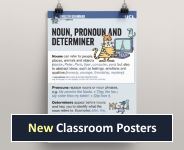Discourse structure
Goals
- Review a list of useful vocabulary and phrases for establishing continuity, cohesion, and structure in discourse.
- Apply knowledge of discourse structure to arranging sentences into an appropriate, meaningful order as an article.
- Analyse existing texts to identify elements that support the discourse structure of the texts.
Lesson Plan
Activity 1


